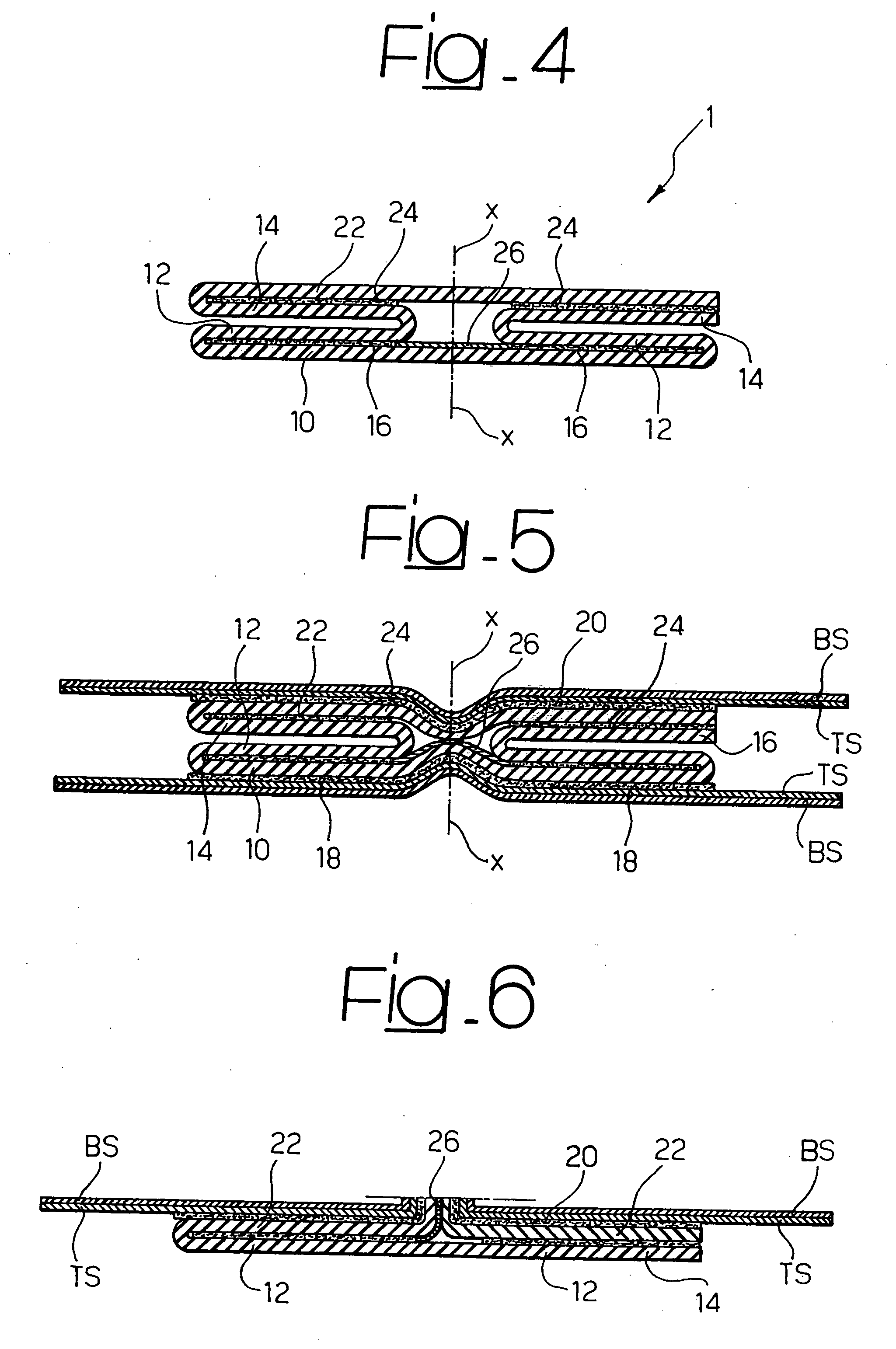Closure element for absorbent sanitary products, manufacturing process, process of use, and product thus obtained
a technology closing elements, which is applied in the field of absorbent sanitary products, can solve the problems of irritation or cutting of the skin, the element itself is positioned improperly for subsequent treatment, and the skin is irritated or cu
- Summary
- Abstract
- Description
- Claims
- Application Information
AI Technical Summary
Benefits of technology
Problems solved by technology
Method used
Image
Examples
Embodiment Construction
[0037] In the various representations of FIGS. 1 to 18 and FIGS. 23 to 25, the fastening / closure element described herein is not drawn to scale. This fact can be appreciated e.g., by direct reference to FIGS. 19 and 20 and corresponds to a deliberate choice made for the sake of clarity of presentation.
[0038] With immediate reference to FIGS. 19 and 20, in these figures the reference D indicates absorbent sanitary products such as diapers of the type commonly known as training pants.
[0039]FIGS. 19 and 20 refer to products made by operating crosswise.
[0040] This latter mode of operation, which is to be deemed known in its most general terms, envisages making a strip, web or chain of sanitary products (or, more correctly, of semi-finished pieces D′ of said products), each of which presents a general hourglass configuration.
[0041] The semi-finished pieces D′ are constituted by: [0042] a top or inner sheet (i.e., with respect to the normal conditions of use of the diaper), usually re...
PUM
| Property | Measurement | Unit |
|---|---|---|
| Fraction | aaaaa | aaaaa |
| Length | aaaaa | aaaaa |
| Pressure | aaaaa | aaaaa |
Abstract
Description
Claims
Application Information
 Login to View More
Login to View More - R&D
- Intellectual Property
- Life Sciences
- Materials
- Tech Scout
- Unparalleled Data Quality
- Higher Quality Content
- 60% Fewer Hallucinations
Browse by: Latest US Patents, China's latest patents, Technical Efficacy Thesaurus, Application Domain, Technology Topic, Popular Technical Reports.
© 2025 PatSnap. All rights reserved.Legal|Privacy policy|Modern Slavery Act Transparency Statement|Sitemap|About US| Contact US: help@patsnap.com



